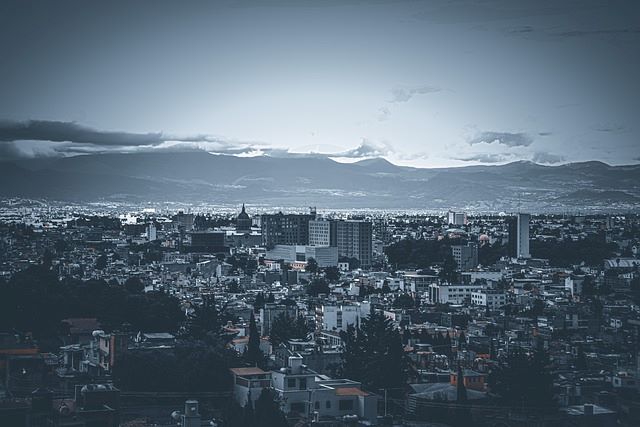Ozone Season 2023 in The Valley of Mexico
This article discusses the increasing atmospheric environmental contingencies in the Valley of Mexico due to the reversal of decreasing maximum ozone concentrations. The causes and proposed solutions to this issue are explored.

The Valley of Mexico is facing an increase in atmospheric environmental contingencies, as the trend of decreasing maximum ozone concentrations has reversed in recent years. Although successful programs to reduce pollutant emissions and monitor cars were previously implemented, they are no longer enough.
At a remote press conference at the start of the 2023 season for ozone pollution, Óscar Peralta Rosales explained that environmental contingencies require applying restrictive measures to decrease emissions and reduce ozone and particulate matter concentrations in the atmosphere.
Peralta revealed that over the past three years, there has been a more frequent application of the ozone contingency program. In 2019, four contingencies were declared, of which two lasted for almost three days and one for two days, triggered in the southwest zone of the Valley of Mexico.
Only one contingency was declared in 2020, lasting only a day and a few hours, likely due to atypical behavior in the emission of ozone precursors caused by the health emergency. However, in 2021, three contingencies occurred, two in April and one in June, and in 2022, six contingencies were registered, one of which lasted for 51 hours.
Peralta explained that the southwest zone is generally where contingencies are activated, usually in the afternoon, between 3 and 5 pm when "all the ingredients are in place" for rapid ozone formation.
Ozone Season Conditions
Erika Danae López Espinoza has highlighted the specific atmospheric conditions that contribute to the development of the ozone season. This period is characterized by high temperatures, especially in the afternoons of April and May, scarce rainfall, and reduced cloudiness and water vapor. These conditions allow for greater ultraviolet radiation, which triggers the formation of pollutants.
The direction and speed of winds also play a significant role in this phenomenon. Although the circulation patterns in the Valley of Mexico are complex, a predominant wind from the north to south occurs during the day and night. However, in the months when ozone concentrations are highest, the winds blow from southeast to north, creating a convergence zone that leads to the accumulation of pollutants. Moreover, the winds are weak.
The concentration of pollutants is further exacerbated by the urban area's location, which is surrounded by mountain ranges to the east, west, and south. These ranges limit the dispersion of pollutants, adding to the problem. Besides the atmospheric factor, the geographical factor also contributes to this issue.
Pollutants in the Lower Atmosphere
According to Elizabeth Vega Rangel, an expert in atmospheric sciences, ozone in the lower troposphere (where we live) is formed through a process that involves two precursors: nitrogen oxides and volatile organic compounds, as well as solar radiation. However, while the Environment Ministry regularly measures nitrogen oxides through the Automatic Atmospheric Monitoring Network, the same cannot be said for volatile organic compounds, making it crucial to understand their concentrations and different species in the atmosphere.
Vega Rangel further explained that there are two types of air pollutants: primary pollutants, which are directly emitted (such as particles, carbon monoxide, and volatile organic compounds), and secondary pollutants, which are formed when gases react in the atmosphere (such as ozone).
One of the primary precursors of ozone is nitrogen oxide, which is primarily emitted by motor vehicles (80% from private cars, 7% from public transport, and 13% from freight vehicles), as well as industrial furnaces. However, the Mexico City government has made significant efforts to switch to cleaner technology for public transport.
Emissions, Verification, and Ozone
Ricardo Torres Jardón, an expert in emissions, has clarified that working-day emissions remain largely constant; it is the weather that varies and affects ozone production. In particular, high solar radiation, temperature, and light winds significantly increase ozone production. To prevent contingencies, Jardón proposes that authorities take preemptive measures based on careful analysis of weather conditions.
Jardón endorses the efficacy of car verifications and suggests that this system should also apply to cargo trucks with diesel engines and out-of-state license plates, with a focus on improving these checks. As for indoor environments, ozone concentration is lower than in outdoor spaces, which makes it prudent to avoid exercising outdoors from 1 pm to 5 pm and to remain indoors when possible.
Jardón warns that agricultural and forest fires beyond the metropolitan area can cause contingencies in the Valley. Thus, preventive measures should be taken to avoid such incidents.
Ozone Study Project
Omar Amador Muñoz emphasizes the impact of contingencies on both health and the economy. He proposes a project aimed at studying species emitted from sources that have not been studied extensively, such as household cleaning products, personal hygiene products, paints, and chemicals used in industry. With collaboration from the Ministry of the Environment and funding from the Ministry of Education, Science, Technology, and Innovation, the project aims to identify the species with the greatest impact on ozone formation.
Research shows that oxygenated organic compounds in these products contribute significantly to ozone formation, accounting for about 15% of its potential. To determine which products are most commonly used in Mexico City, the institute is surveying its website.
By identifying the predominant species in commonly used products, it may be possible to suggest changes in their composition, thereby reducing emissions into the atmosphere and avoiding contingencies. In conclusion, Amador Muñoz proposes a practical solution to tackle the issue of ozone formation.




